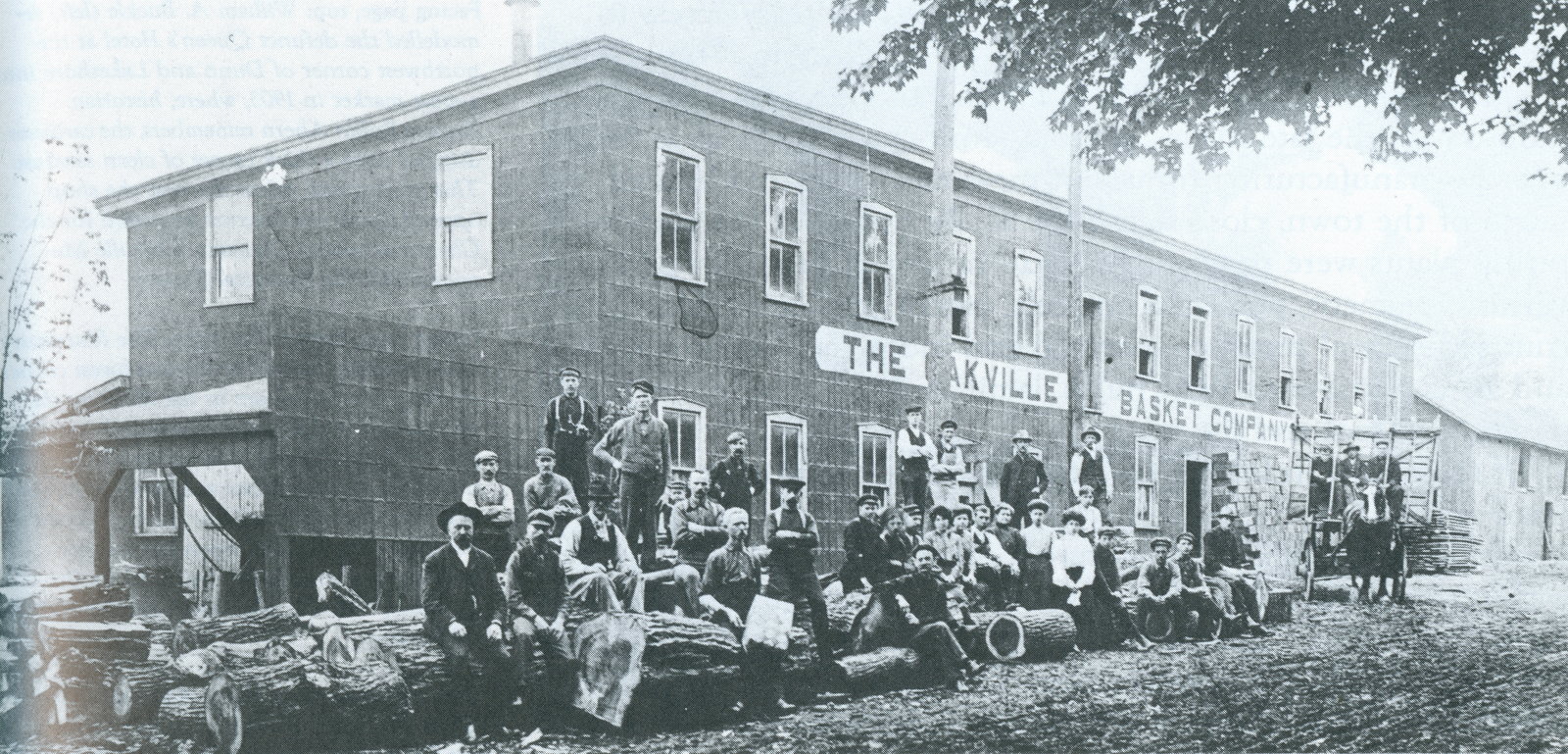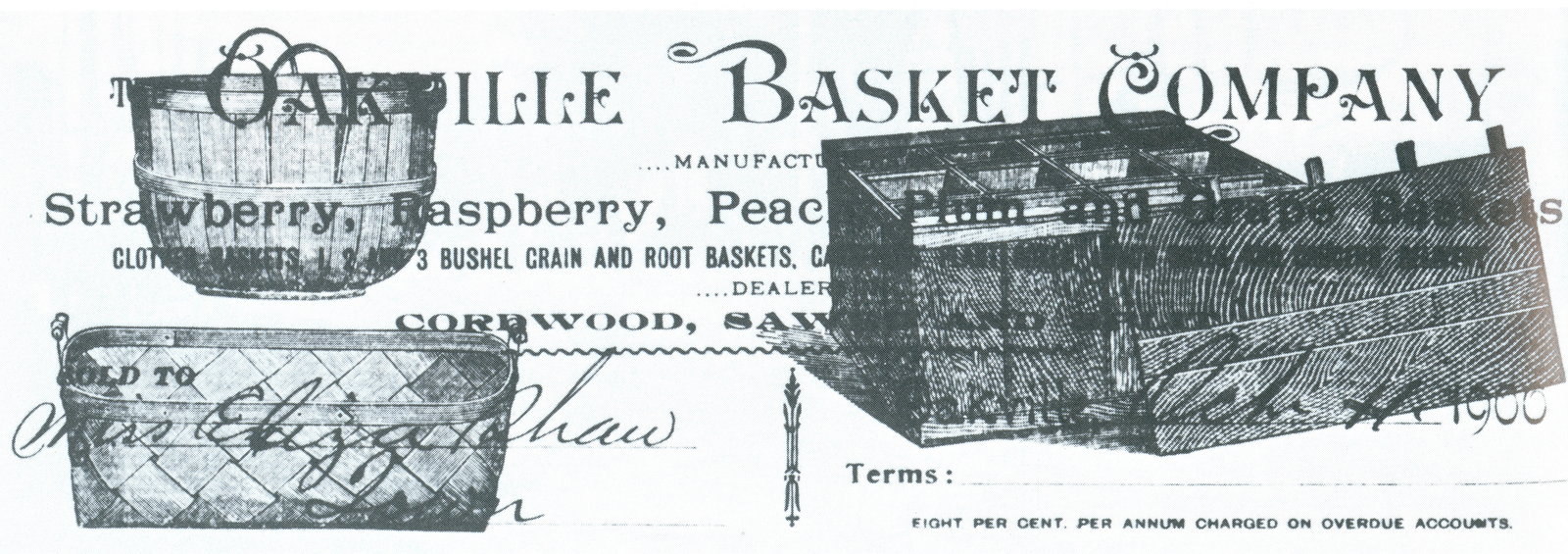
In the early years, farmers discovered the rich Oakville soil and growth potential, resulting in the birth of the farming industry. Fruit farms became very profitable for anyone farming within the Oakville vicinity. If your fruit was labeled from Oakville at the intercity markets, it was in high demand! The railroad helped in the growth and success of this industry. It provided an easy and fast way for farmers to transport their fresh goods to market, to ensure that they did not spoil. Oakville strawberries were the most in demand of all the fruits sold. They were very popular at the market as they gained what was known as the “Oakville” reputation – a great, high quality product!

It was the high demand for Oakville produce that led to the creation of the Oakville Basket Company to serve the growing needs of farmers. Farmers needed a way to safely transport their fruit on the railroad without it getting damaged and the Oakville Basket Company was established. This company was a major source of employment for Oakville civilians and by the 1900s the company was running a very successful operation. The woven baskets were used to transport a variety of fruits - strawberries were however the main focus. Each operator made approximately 2,000 baskets a day! Only producing wooden products at this factory, the plant was a constant fire hazard and as a result had to be monitored very closely. Despite having many changes in ownership and suffering from two fires, the Oakville Basket Company was highly successful and was in business until 1984.
Throughout Oakville's development, farming became increasingly popular. Farmers could often be seen Saturday mornings on Colborne Street, now known as Lakeshore Road. They would usually make their first stop to drop off their crops for the week at either the railroad station or harbour. After sending off their goods for the week, farmers would continue to Colborne Street to do some shopping. From the Oakville Record-Star in 1955, Mr. Byers remembers how "Colborne Street was lined with light wagons with flat tops instead of the modern cars of today. Hitching posts were in order then, not parking meters."
Another type of farming that was very successful was the raising of chickens and surprisingly, squab! As the value of poultry and eggs increased in the early 1900s, this was a very profitable business since the product was often scarce. One farmer, Mr. P.A. Bath, went into this particular business, breeding thousands of Garneaux pigeons at a time. This breed of pigeon is quite large, and the young are also commonly known as squab. The farm flourished, as the Oakville land was perfectly situated for this particular type of breeding. As well, very few farms could provide this type of meat for customers. With Oakville’s unique waterfront location, businesses were provided with the essential resources needed to succeed. Because of the variety of industries that began to blossom in Oakville, the town was able to survive the Great Depression better than most nearby areas.
Information credited to: Ahern, Frances Robin. Oakville: A Small Town (1900-1930). Erin, Ont.: Oakville Historical Society in association with The Boston Mills Press, 1981. Print. and to: Brennan, Jessie Lee. "Hitching Posts were Scarce Saturday Nights when Farmers hit Colborne Street in 1915." The Oakville Record-Star 15 Sept. 1955: 1. Print. and to: Griffin, George A. Oakville Past and Present. Toronto, Ont.: Griffin & Griffin Publishers, 1912. Print. and to: McKeon, Clare and Joseph P. McKeon. Oakville, A place of some importance. Burlington, Ont.: Windsor Publications, 1986. Print.
